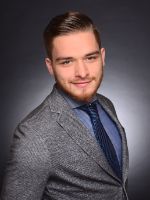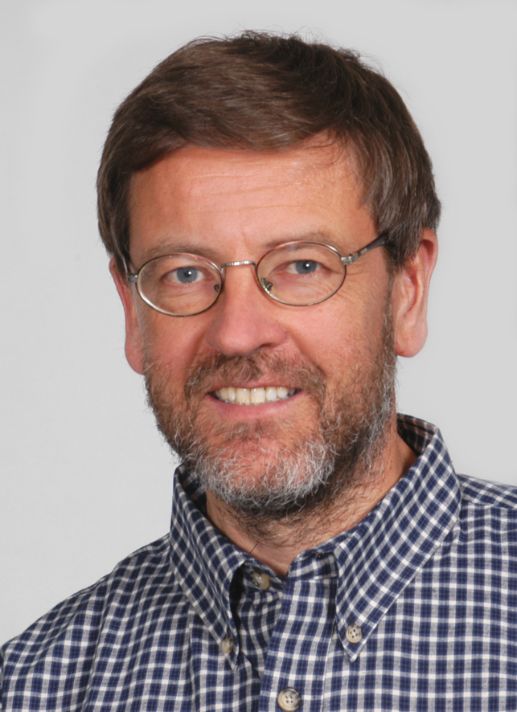Events - Page 11
Abstract: Many constructions have been proposed to attain adaptivity within the IGA framework (HB-, T-, LR-splines among others).
The idea of all approaches is to break the tensor product structure of the space in order to allow a spatially varying resolution.
Here we present an approach for adaptivity in IGA aimed at solving PDEs with preconditioned Krylov methods.
All the main ingredients of this work are already known, but their combination looks promising for the
development of isogeometric solvers with a good balance of flexibility and computational efficiency.
Hybrid format via Zoom possible on demand (contact timokoch at uio.no)
Doctoral candidate Andreas Nakkerud at the Department of Mathematics will be defending the thesis Integer Programming Approaches for Real-Time Traffic Management for the degree of Philosophiae Doctor.
C*-algebra seminar talk by Guillaume Aubrun (Université Claude Bernard Lyon 1)
C*-algebra seminar talk by Alistair Miller (Queen Mary University of London)
Abstract: Dynamic Contact Lines are moving lines at which two fluids (eg air and water) and a solid meet. They offer longstanding paradoxes in the theory of continuum mechanics. I describe some aspects of their computation: a curtain-coating numerical experiment, a withdrawing plate, and a droplet between parallel plates. All computations are done using Volume-Of-Fluid methods on octree grids, and comparisons with phase field and molecular dynamics approaches performed in collaboration with KTH, Stockholm.
Hybrid format via Zoom possible on demand (contact timokoch at uio.no)
The Section 4 seminar for the Spring of 2022 will be held on Tuesdays from 10:15–12:00 (see the schedule)
Update (13/01/2023): We are organising a similar workshop from May 3 to May 5, 2023. You can find more information here: click here
You are cordially welcome to participate in this three-day conference on climate, weather and carbon risk in energy and finance. The conference will gather academics and practitioners, discussing the latest advances on the stochastics of risk measuring, modeling and managing, with a focus on energy systems, markets and finance (ESG).
Key topics involve modelling uncertainty in weather and climate, optimisation problems related to energy systems to control emissions, as well as measuring risk factors related to climate change.
There will be several invited talks by leading researchers as well as selected contributed talks by participants.
C*-algebra seminar talk by Judy Packer (University of Colorado Boulder)
C*-algebra seminar talk by Roberto Conti (Sapienza University of Rome)
Doctoral candidate Markus Musch at the Department of Mathematics will be defending the thesis Analysis and Numerical Treatment of Nonlinear Hyperbolic Conservation Laws on Graphs for the degree of Philosophiae Doctor.
C*-algebra seminar / Gemini Center seminar talk by Paula Belzig (University of Copenhagen)
Abstract: I present the electrophoretic transport phenomenon of spherical soft particles. Electrophoresis is one of the important electrokinetic techniques, which is often used to characterize, and separation of colloids. It is commonly used as a separation technique and often used in the separation of DNA, protein molecules, serum to identify paraproteins, etc. Electrophoretic transport phenomenon is also used to understand the electric properties of several bioparticles including virus, bacteria, humic cells and macromolecules and may be used to understand the transport of cargo vessel in treatments of various diseases, e.g., cancer, inflammation, multiple myeloma, rental pathological disorders and macroglobulinemia, etc. Thus, the proper understanding of the electrophoretic transport of soft particles is important to understand the characteristics features of various bio-colloids and macromolecules, which can be viewed as soft particles. In this talk, I will present some of the existing simplified models for electrophoretic transport of soft particles. In addition, I have further extended it for the real situation, considering the effect of pH-dependent charge densities of the inner core and peripheral soft polymeric layer, effect of hydrodynamic slip length of the hydrophobic core surface, etc.
Hybrid format via Zoom possible on demand (contact timokoch at uio.no)
I present a simple, efficient, three dimensional, time dependent model for bone regeneration in the presence of porous scaffolds to bridge critical size bone defects. The essential processes are an interplay between the mechanical and biological environment which we model by a coupled system of PDEs and ODEs. The mechanical environment is represented by a linear elastic equation and the biological environment through reaction-diffusion equations as well as as logistic ODEs, modelling signalling molecules and cells/bone respectively. Material properties are incorporated using homogenized quantities not resolving any scaffold microstructure. This makes the model efficient in computations, thus suitable as a forward equation in optimization algorithms and opening up the possibility of patient specific scaffold design and this model is used as a PDE constraint for the optimization of polymer scaffold porosities. Our numerical findings show that our model for example recovers and quantifies clinically relevant stress shielding effects that appear in vivo due to external fixation of the scaffold at the defect site.
This talk is part of the Mechanics Lunch Seminar series. Bring-your-own-lunch and lots of questions.
Abstract: T cell activation is initiated upon T cell receptor (TCR) binding to cognate peptide-MHC complexes on the surface of antigen presenting cells (APCs). This initiates the formation of the immunological synapse – a specialized hub for bidirectional membrane transfer between T cells and APCs which is essential for processes such as downregulation of triggered TCR and T cell-mediated stimulation of B cells. Here, I will present some recent advancements in our understanding of how this is regulated.
This talk is part of the Mechanics Lunch Seminar series. Bring-your-own-lunch and lots of questions. Hybrid format via Zoom possible on demand (contact timokoch at uio.no)
The new Department of Mathematics seminar series will present seminars of interest to all sections at the Department.
It will start off with Nils Lid Hjort talking about the 2022/2023 CAS project Stability and Change, which is joint with PRIO.
Abstract: What links a baby’s first breath to adhesive debonding, enhanced oil recovery, filtration or multiphase microfluidics? These processes all involve two-phase flows in rigid or elastic confined vessels and are often prone to interfacial instabilities. The canonical viscous fingering instability, which occurs when air displaces a viscous fluid in the narrow gap between two parallel plates, offers a versatile testbed for such phenomena. In this talk, I will use both experiments and numerical simulations of depth-averaged models to explore several aspects of bubble dynamics in Hele-Shaw cells. I will first show how the onset of fingering can be suppressed when replacing the upper plate of the vessel with an elastic sheet. Interfacial flows in narrow gaps can also exhibit considerable disorder, but they are rarely investigated from a dynamical systems’ perspective. I will show how compliance can promote rich multiplicity of front propagation modes in a channel before turning to bubble propagation in a rigid channel with a depth perturbation. There I will explore how the bubble’s organised transient dynamics is orchestrated by weakly-unstable steady propagation modes, and how its long-term behaviour may be practically unpredictable.
This talk is part of the Mechanics Lunch Seminar series. Bring-your-own-lunch and lots of questions. Hybrid format via Zoom possible on demand (contact timokoch at uio.no)
Doctoral candidate Giovanni Domenico Di Salvo at the Department of Mathematics, Faculty of Mathematics and Natural Sciences, is defending the thesis Proper Holomorphic Embeddings of open Riemann Surfaces into C2 and holomorphic mappings between complex manifolds with dense images for the degree of Philosophiae Doctor.
Abstract: A random, labyrinthine pattern emerges during slow drainage of a granular-fluid system in two- dimensional confinement. Compacted grains are pushed ahead of the fluid-air interface, which becomes unstable due to a competition between capillary forces and the frictional stress mobilized by grain-grain contact networks. We reproduce the pattern formation process in numerical simulations and present an analytical treatment that predicts the characteristic length scale of the labyrinth structure. The pattern length scale decreases with increasing volume fraction of grains in the system and increases with the system thickness. By tilting the model, aligned finger structures, with a characteristic width, emerge. A transition from vertical to horizontal alignment of the finger structures is observed as the tilting angle and the granular density are varied. The dynamics is reproduced in simulations. We also show how the system may explain patterns observed in nature, created during the early stages of a dike formation.
This talk is part of the Mechanics Lunch Seminar series. Bring-your-own-lunch and lots of questions. Hybrid format via Zoom possible on demand (contact timokoch at uio.no)
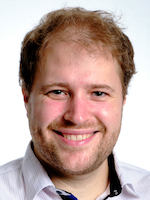
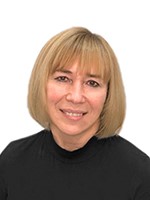

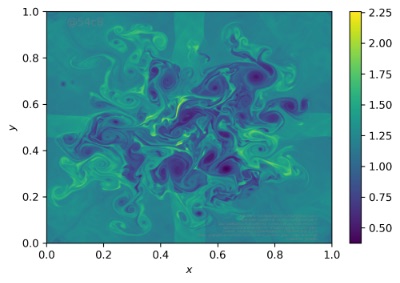
.png?alt=listing)
